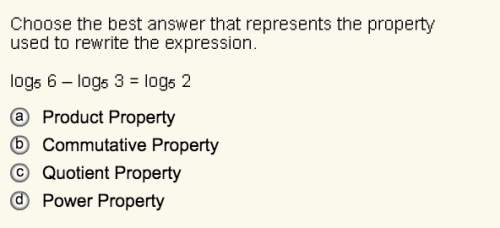
Mathematics, 27.04.2021 15:20 sadiesnider9
For a certain brand of tomato seeds, the seed package claims that it takes 87 days after planting for the tomato plants to produce fruit. Sarah, a botanist, wanted to know whether the mean number of days for the plants to produce fruit where she lives is different from 87 days. She planted 40 seeds and recorded the number of days for each plant to produce fruit. With all conditions for inference met, the hypothesis test was conducted at the significance level a = 0.05, and the test resulted in a p-value of 0.0752. ?
Which of the following is a correct conclusion?
A. Sarah has convincing statistical evidence to conclude that the population mean number of days for the plants to produce fruit is greater than 87 days.
B. Sarah has convincing statistical evidence to conclude that the population mean number of days for the plants to produce fruit is different from 87 days.
C. Sarah does not have convincing statistical evidence to conclude that the population mean number of days for the plants to produce fruit is greater than 87 days.
D. Sarah does not have convincing statistical evidence to conclude that the population mean number of days for the plants to produce fruit is different from 87 days.
E. Sarah does not have convincing statistical evidence to conclude that the population mean number of days for the plants to produce fruit is equal to 87 days.

Answers: 1


Another question on Mathematics

Mathematics, 21.06.2019 20:30
choose the correct definition for extremo. a. end b. extra c. extract d. eventual
Answers: 2


Mathematics, 21.06.2019 23:30
Drag each number to the correct location on the statements. not all numbers will be used. consider the sequence below. -34, -21, -8, 5, complete the recursively defined function to describe this sequence
Answers: 1

Mathematics, 22.06.2019 00:00
Ascientist studied a population of workers to determine whether verbal praise and/or tangible rewards affect employee productivity. in the study, some workers were offered verbal praise, some were offered tangible rewards (gift cards, presents, and some were offered neither. the productivity of each participant was measured throughout the study by recording the number of daily tasks completed by each employee. which inference might the scientists make based on the given information? a.) the number of daily tasks completed by each employee may influence the dependent variable, which is whether the employee receives verbal praise, tangible rewards, or neither. b.) verbal praise and/or tangible rewards may influence the independent variable, which is the number of daily tasks completed by each employee. c.) verbal praise and/or tangible rewards may influence the dependent variable, which is the number of daily tasks completed by each employee. d.) the dependent variables, which are verbal praise and tangible rewards, may influence the number of daily tasks completed by each employee.
Answers: 1
You know the right answer?
For a certain brand of tomato seeds, the seed package claims that it takes 87 days after planting fo...
Questions






Mathematics, 05.09.2020 22:01




English, 05.09.2020 22:01

Mathematics, 05.09.2020 22:01













